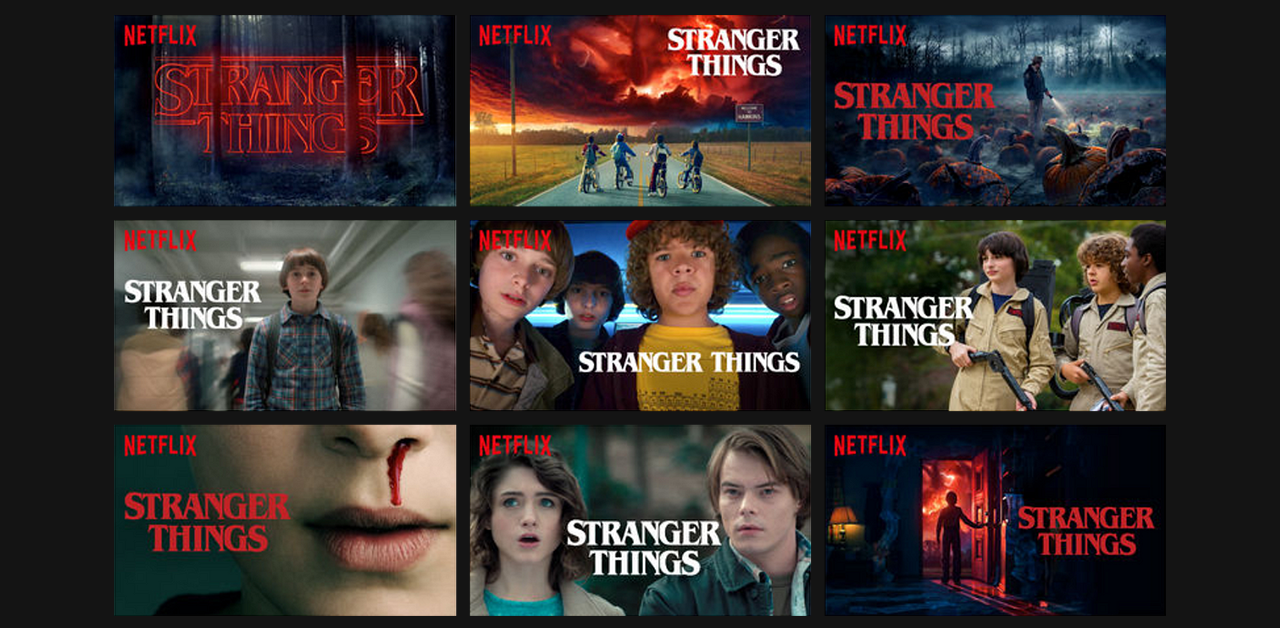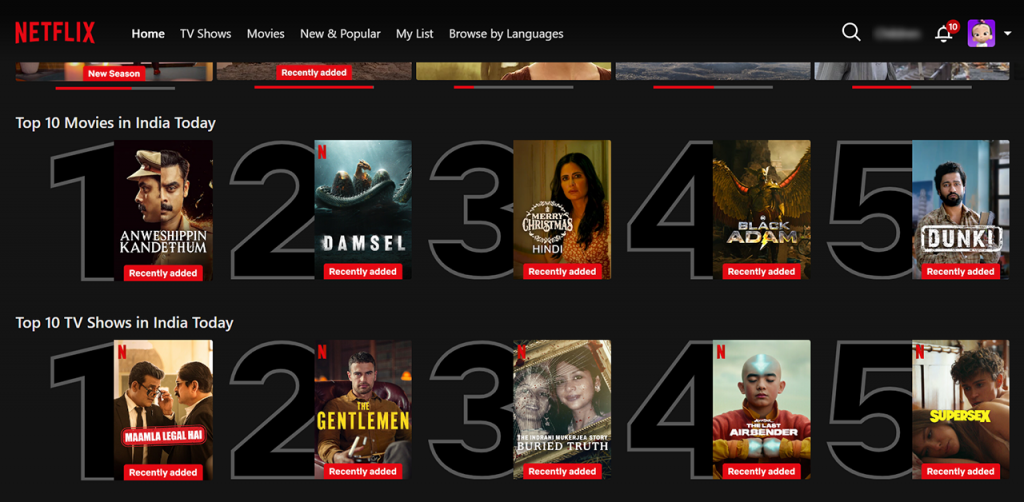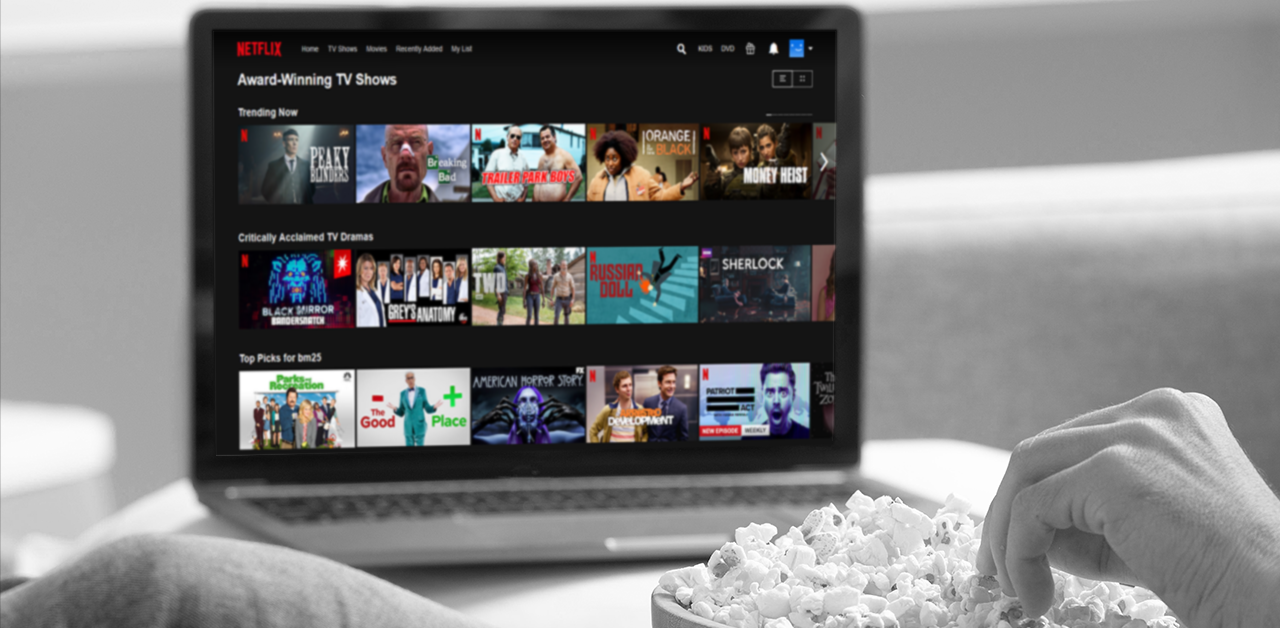Why this blog?
Discover how AI drives personalized content experiences on platforms like Netflix, from optimized thumbnails to tailored recommendations. Explore the role of machine learning in quality control processes and learn about future advancements like deep learning for improving live streaming quality. Dive into the transformative power of AI in revolutionizing the entertainment industry.
The pandemic has changed the entertainment industry in multiple ways. At the end of the day, when it’s time to relax, many of us turn to Netflix. As a result, these platforms have exponentially increased their audience base in the last few years.
In 2021, for the first time in history, more people will pay for online streaming services than for a television set-top box. But the streaming market is now more competitive than ever before. Therefore, every streaming service is integrating Artificial Intelligence to personalize the viewing experience.
For tech giants like Netflix, Artificial Intelligence (AI) has already become commonplace. The site uses it to personalize its content. And as unsettling as it may sound, Netflix takes a lot of data from us to improve its recommendation engines. But in the coming days, there will be hardly any industry left that is not leveraging our data. As you read the article you will learn about the many use cases for AI in Netflix and other streaming services.
Thumbnail Personalization
A streaming service has to convince the viewer that a title is worth watching. One way to do it is by selecting a relatable thumbnail to portray the titles. However, it is difficult to find an image that is both relatable and highlights the aspects of a title.

To solve this, Netflix uses contextual bandits. Contextual bandits are a class of online learning algorithms. It selects the best artworks to target varied genre-specific audiences. To illustrate, the platform considers many attributes of the audience such as titles they’ve clicked, types of genre of the titles, interactions of the viewers with the specific title, country, language preferences, the device type, the time of day, and the day of the week. Firstly, the attributes are fed in the model. Secondly, the AI model ranks the images and predicts the probability of play for an image in a member context. Thirdly, it sorts a candidate set of images by these probabilities. Finally, the viewers see the picture with the highest probability.
Optimal Content Quality Control

While watching Youtube videos you must have seen a video unsynchronized with audio or captions. An unoptimized video can tear down a viewer’s experience. Hence, it’s important to ensure the quality of video, audio, and text.
Netflix’s Quality Control process consists of two types: Automated inspection and Manual inspection. Automated inspections are performed before and after the encoding process. Moreover, it compresses the larger source files into a set of smaller encoded distribution files (at different bitrates, for different devices, etc.). Manual QC is done after Automated inspections. Afterward, it checks for issues easily detected with the human eye.
Automated inspections use a supervised machine learning (ML) approach by injecting results from past manual QC checks. Then, it is used to train a predictive quality control model that predicts a “fail” (likely has content quality issue) or “pass.” A key goal of the model is to identify all defective assets even if this results in extra manual checks.
You can also read Future of AI in Streaming Services
Tailored Movie Recommendations

Many of us are confused about what to watch from a plethora of options. With Netflix, AI personalization starts at the homepage. The recommender system first works on the title selection and the number of items to include in each row. Eventually, the goal of the system is to sort the movie or drama items in such a way that it connects with the viewer instantly.
Hence, the recommender system uses two features to develop a ranking prediction model: One is the popularity of items and the other is the viewer’s predicted rating for each item. But, how does the platform know which feature subsides the other and when? By using a machine-learning algorithm. It learns from the historical data of user preferences and personalizes each item according to the appropriate amount of feature weight. Consequently, delivering the goal of optimum recommendation in every item.
Live Streaming

Imagine live streaming a Cricket Match, the player hits a shot high up in the air, but unable to see anything beyond a highly pixelated catch out, the poor network may infuriate a lot of sports enthusiasts. In fact, this happens because of Adaptive bitrate (ABR) streaming.
In ABR, if you are watching a video on 1080 pixels and suddenly your internet speed drops it adapts to 480 pixels. Many Over the Top (OTT) platform owners are struggling to improve streaming beyond ABR. One way to achieve this is through deep learning. The system is fed with the historical data of the mobile network and the data of the video context. The system could provide an immersive experience for the user by adapting to lower pixels as per the context of the video. In other words, the system will know if the scene is important to the viewer by not lowering the pixels at that given scene. However, this system is yet to be developed, but it could save significant amounts of time and money for OTT platforms if it is successfully implemented.
To summarize, every streaming service has a similar goal to make the streaming experience compelling for its customers. To have an edge over their competitors, Netflix and other streaming platforms are working hard on their approach to implementing quality streaming services with the help of AI and Machine learning technologies.










